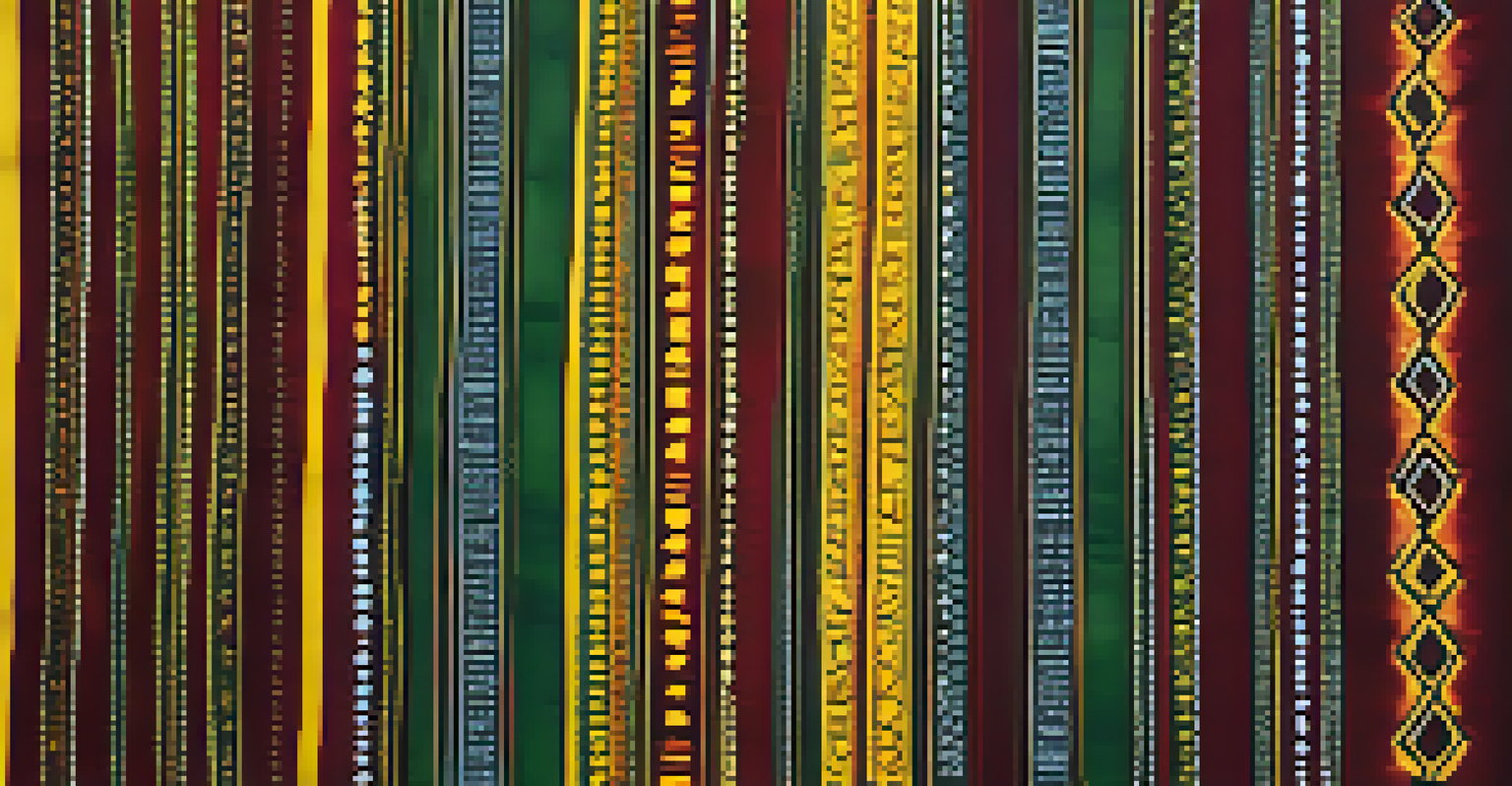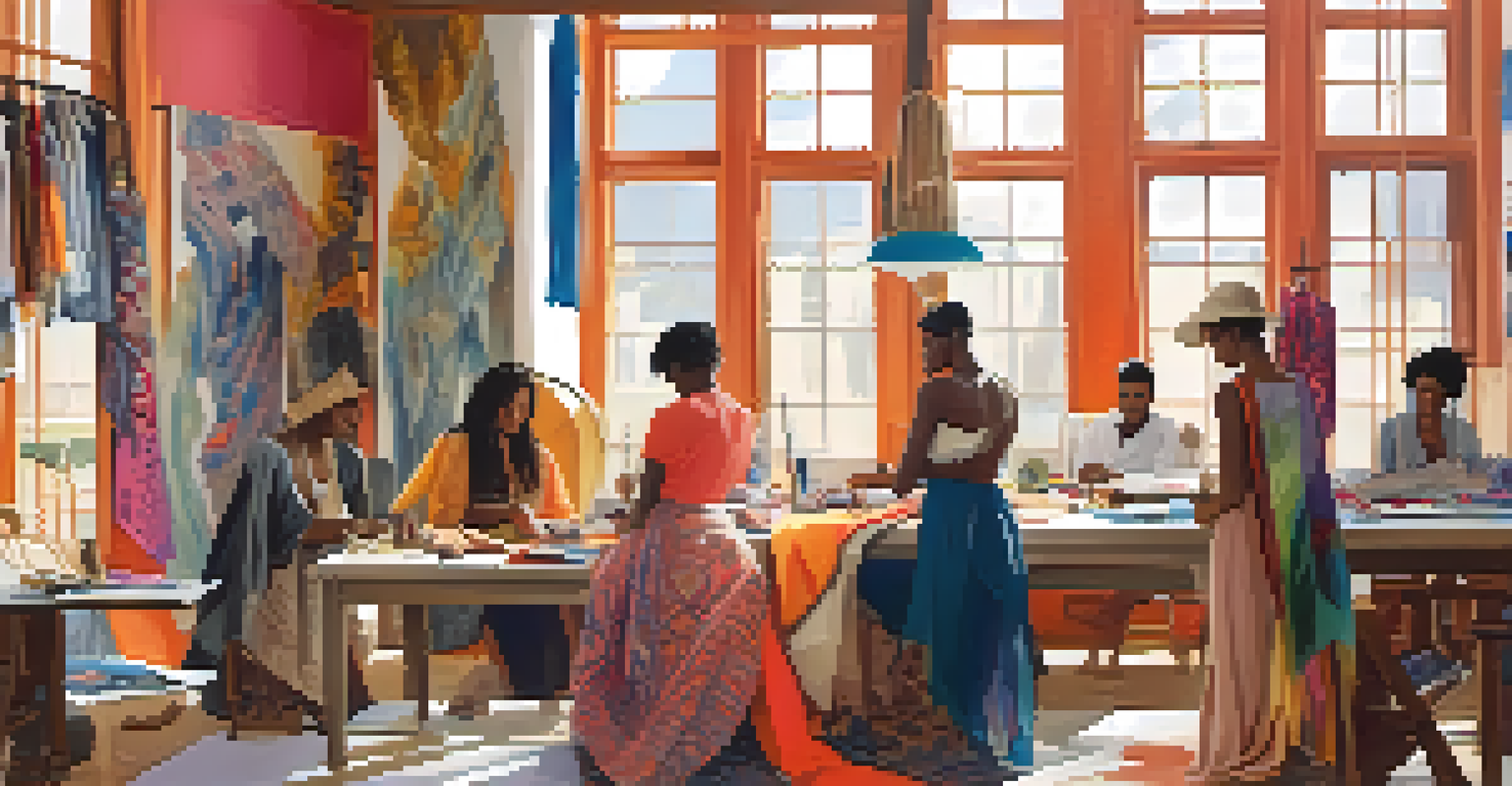Understanding Cultural Sensitivity in Fashion Design Practices

What is Cultural Sensitivity in Fashion Design?
Cultural sensitivity in fashion design refers to an awareness and appreciation of the diverse cultures that influence style and trends. This concept encourages designers to respect and honor cultural traditions rather than appropriating them without understanding their significance. By recognizing the values and histories behind specific designs or motifs, designers can create pieces that celebrate rather than exploit cultural heritage.
Fashion is about dreaming and making other people dream. It’s about culture, and it’s about the way we live our lives.
Incorporating cultural sensitivity means engaging with communities to learn their stories and perspectives, which can enrich the design process. It’s about creating a dialogue rather than a monologue, where designers listen and learn from those whose cultures inspire their work. This approach can lead to more authentic and meaningful fashion that resonates with both consumers and the communities represented.
For example, using traditional patterns from Indigenous cultures requires a deep understanding of their meanings and the histories they carry. Designers who take the time to research and connect with these communities can create fashion that honors their traditions, fostering respect and collaboration.
The Fine Line Between Inspiration and Appropriation
Inspiration in fashion often draws from various cultures, but there’s a critical distinction between respectful inspiration and cultural appropriation. Appropriation occurs when elements of a culture are used without permission or understanding, often stripping them of their original meaning. This can lead to a disconnect and even offense among those whose culture is being borrowed.

To avoid appropriation, designers should seek permission and engage with the culture they wish to draw from. This means not just looking at the surface but understanding the underlying significance of cultural elements. When designers collaborate with cultural representatives, they not only enrich their work but also build bridges of understanding and respect.
Cultural Sensitivity in Fashion
Designers must honor and understand cultural traditions to create meaningful fashion that celebrates heritage.
A great example of this is the partnership between fashion brands and Indigenous artists, where both parties benefit. Such collaborations can lead to unique collections that honor the artistry of Indigenous cultures while providing designers with authentic inspiration.
The Role of Research in Cultural Sensitivity
Thorough research is the backbone of cultural sensitivity in fashion design. It involves diving deep into the histories, customs, and values of the cultures that inspire a designer. This research is not a one-time effort but an ongoing journey of learning and understanding that shapes the designer's perspective.
Cultural appropriation is not just a matter of stealing ideas; it's about understanding the significance behind those ideas.
Fashion designers can utilize various resources for their research, including books, documentaries, and direct conversations with cultural practitioners. Additionally, attending cultural events and workshops can provide firsthand experiences that enhance a designer's understanding. The more a designer knows, the better equipped they are to create pieces that genuinely resonate with the culture.
For instance, a designer interested in African textiles might explore the significance of colors and patterns used in different tribes. Understanding these elements not only enriches the design process but also ensures that the resulting fashion is respectful and meaningful.
Building Relationships with Cultural Communities
Building genuine relationships with cultural communities is crucial for promoting cultural sensitivity in fashion. This involves establishing trust and open lines of communication, which can lead to collaborative projects that benefit both designers and cultural groups. When communities feel valued and respected, they are more likely to share their stories and traditions.
Designers can approach these relationships with humility, recognizing that they are guests in someone else's cultural space. Engaging in dialogue and being open to feedback allows for a more authentic connection. This process can also help prevent potential missteps that could arise from misunderstanding cultural elements.
Inspiration vs. Appropriation
Respectful inspiration involves engaging with cultures authentically, while appropriation strips away original meanings.
For example, a designer working with a particular community may find that certain symbols have deep meanings that aren't immediately apparent. By fostering a collaborative relationship, they can ensure that their designs reflect the community's values and narratives accurately.
Educating Consumers on Cultural Significance
Educating consumers about the cultural significance behind fashion choices is an essential aspect of promoting cultural sensitivity. Designers have a responsibility to inform their audience about the stories and meanings behind their collections. This not only enhances the consumer's appreciation but also fosters a sense of respect for the cultures represented.
Marketing strategies can include storytelling elements that highlight the cultural context of the designs. By sharing insights into the research and relationships built with cultural communities, brands can create a more informed and engaged customer base. This approach encourages consumers to think critically about their fashion choices and the impact of those choices.
For instance, a brand might release a collection inspired by traditional Japanese garments, providing information about the cultural practices associated with each piece. This not only enriches the shopping experience but also encourages consumers to connect with the culture on a deeper level.
Challenges in Implementing Cultural Sensitivity
Despite the benefits, implementing cultural sensitivity in fashion design can come with its challenges. One significant hurdle is the risk of backlash from communities if designs are perceived as insincere or exploitative. Designers must navigate these waters carefully, ensuring their intentions are clear and that they are genuinely committed to honoring the cultures they draw from.
Another challenge lies in the fast-paced nature of the fashion industry, which often prioritizes trends over thoughtful engagement with cultural elements. This quick turnaround can lead to superficial interpretations of cultural symbols, undermining the authenticity of the designs. It’s essential for designers to slow down and prioritize meaningful connections over fleeting trends.
Importance of Education and Trust
Educating consumers and building relationships with cultural communities fosters respect and enriches the fashion narrative.
To overcome these challenges, designers can establish guidelines for their practice, ensuring they engage in respectful and informed design processes. This commitment can set a positive precedent in the industry, encouraging others to follow suit.
The Future of Cultural Sensitivity in Fashion Design
The future of cultural sensitivity in fashion design looks promising as more designers recognize the importance of honoring diverse cultures. There’s a growing movement within the industry that advocates for ethical practices and celebrates cultural heritage. This shift is driven by both consumer demand for authenticity and a broader understanding of cultural issues.
As education around cultural sensitivity becomes more widespread, designers are increasingly seeking to create fashion that resonates on a deeper level. This means not only respecting cultural elements but also advocating for the communities they draw inspiration from. The potential for positive change is immense if designers commit to ongoing learning and collaboration.

Ultimately, a more culturally sensitive fashion industry can lead to richer, more diverse designs that reflect the beauty of global heritage. By valuing and respecting cultural contributions, designers can create a more inclusive and compassionate future for fashion.